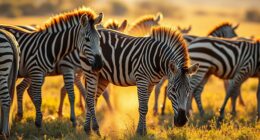In the last decade, you've encountered some truly strange animals. Take the olinguito, a tiny mammal discovered in 2013, or the bone-house wasp that uses ant carcasses to protect its brood. Then there's the cartwheeling spider, which escapes predators by rolling away. Don't forget the world's smallest vertebrate frog, measuring just 7.7 mm! These fascinating discoveries showcase the incredible biodiversity still waiting to be uncovered. From unique insects to bizarre marine life, there's a world of curiosities out there, and you'll be amazed by what else has been found in recent years.
Key Takeaways
- The cartwheeling spider uses a unique rolling motion to escape predators, showcasing remarkable adaptations in arachnids.
- Greening's Frog is the first venomous frog, featuring spines that deliver painful chemicals for defense.
- Bone-house Wasp creatively seals its brood chambers with ant carcasses, providing both physical and chemical protection.
- The world's smallest vertebrate frog, measuring only 7.7 mm, thrives in the leaf litter of Papua New Guinea's rainforests.
- Vangunu Giant Rat, known for its coconut-eating habits, grows up to 18 inches and highlights unique island biodiversity.
Olinguito: A New Mammal
In 2013, researchers made an exciting discovery when they identified the Olinguito (Bassaricyon neblina) as a new species, marking a significant addition to the Carnivora order in the Americas after 35 years.
You'd be amazed to learn that this small mammal, weighing around 2 pounds, was first found in the cloud forests of Ecuador and Colombia. Its distinct reddish-brown fur and large, expressive eyes make it a charming sight in its treetop habitat.
The Olinguito's habitat is essential for maintaining biodiversity, as it supports various species and ecosystem functions, much like how quorum sensing in bacteria plays a role in environmental balance. The Olinguito primarily feeds on fruits and insects, showcasing its nocturnal and omnivorous behavior.
However, despite its enchanting appearance, this new species faces serious threats. The Olinguito is critically endangered, largely due to habitat loss from deforestation and climate change. The discovery not only highlights the importance of biodiversity but also raises awareness about the fragile ecosystems where these creatures live.
Interestingly, specimens were discovered in museum archives, previously misclassified as common olingos. This emphasizes the significance of historical collections in advancing our understanding of biodiversity.
As you learn about the Olinguito, you can't help but appreciate the urgency of conservation efforts to protect this unique mammal and its cloud forest home.
Bone-house Wasp's Macabre Nesting
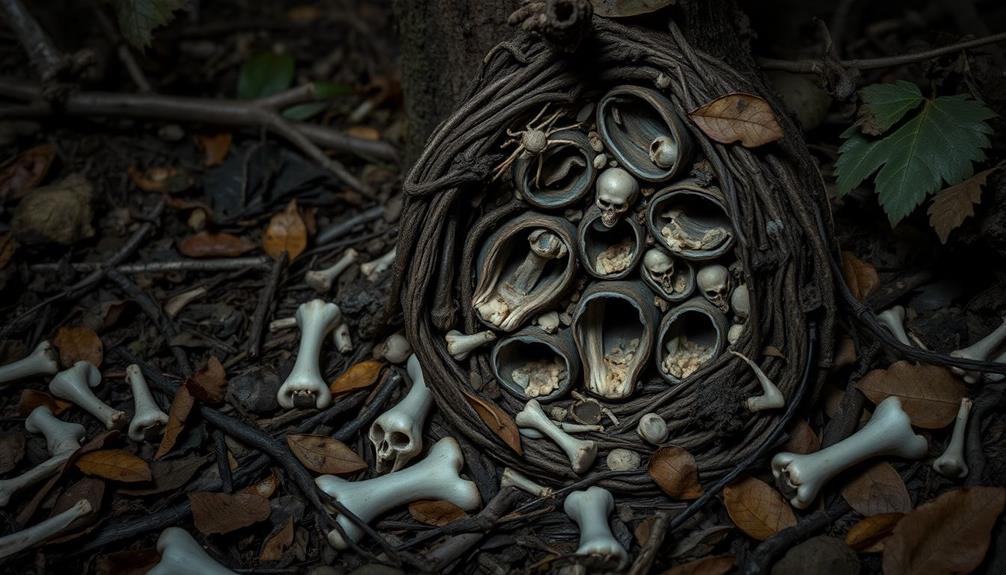
The Bone-house Wasp presents a striking contrast to the charming Olinguito, showcasing nature's darker side. Discovered in 2014, this species employs a gruesome nesting technique that leaves many in awe and horror. By sealing the entrance of its brood chambers with the carcasses of up to 13 ants, the wasp creates a macabre fortress for its young. This chilling behavior isn't just for show; it serves as both a chemical and physical barrier against predators and environmental threats.
Such survival strategies can be as perplexing as understanding dog nutrition and health, emphasizing the intricate balance of ecosystems.
- Nature's survival strategies can be terrifying.
- The juxtaposition of beauty and horror in ecosystems is striking.
- The lengths some creatures go to protect their offspring is haunting.
Despite its unsettling nesting habits, the Bone-house Wasp plays a crucial ecological role. As a venomous predator that primarily feeds on spiders, it helps keep spider populations in check.
The discovery of this wasp has sparked curiosity about its unusual behaviors, highlighting the complexity of insect life. The Bone-house Wasp's eerie practices remind us that nature, while often beautiful, can also be profoundly unsettling.
Cartwheeling Spider Defense Mechanism
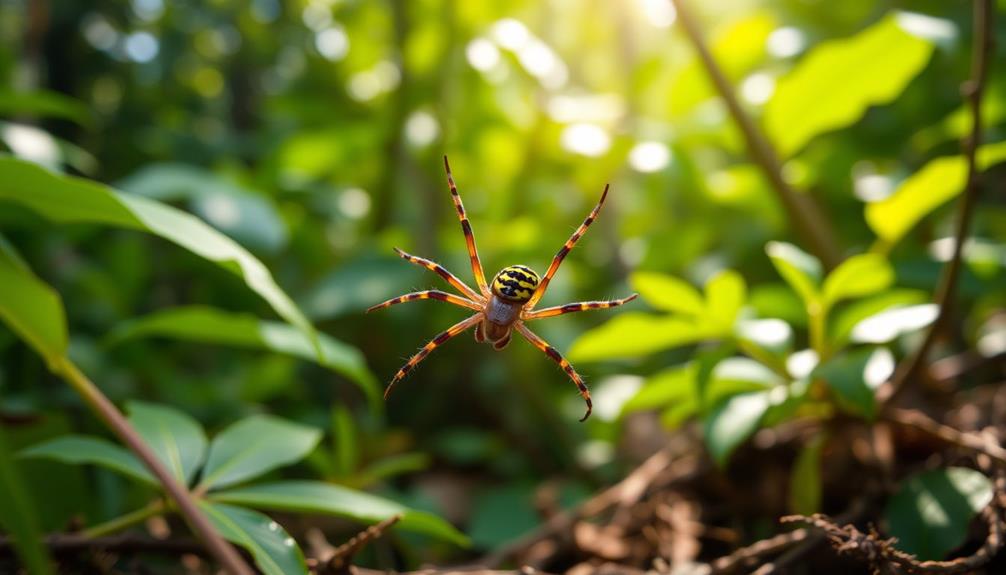
You might be surprised to learn about the cartwheeling spider, which uses a unique defense strategy to escape predators by rolling down sand dunes.
This remarkable ability not only helps it survive in harsh environments but also sparks interest in biometric robotics applications. By studying its efficient locomotion, researchers are uncovering insights that could inspire new robotic designs.
Furthermore, the use of AI technologies enhance personalized treatment plans in healthcare showcases how understanding natural mechanisms can lead to innovative solutions across various fields.
Unique Defense Strategy
Envision a tiny creature that can literally roll its way to safety—a true marvel of nature. The cartwheeling spider, or Cebrennus rechenbergi, showcases a unique defense strategy that's both fascinating and effective. When threatened, this distinct species launches itself into a cartwheeling motion, enabling it to escape from predators at remarkable speeds.
Imagine this little spider rolling down sand dunes, covering distances quickly while evading danger. Its incredible adaptability not only highlights the spider's ingenious methods but also reminds us of the diverse survival tactics found in the animal kingdom, much like the insights provided by quotes from philosophers on resilience.
- It's a spectacular sight that leaves you in awe.
- This spider's adaptability demonstrates the incredible diversity of survival tactics in the animal kingdom.
- You can't help but admire its ingenuity!
First documented in 2015, the cartwheeling spider has since captivated researchers and inspired studies in biomimicry and robotics. Its ability to distract predators makes it difficult for them to track its movements, enhancing its chances of survival.
This unique defense strategy not only highlights the spider's remarkable capabilities but also adds to the list of extraordinary animals discovered in recent years. Nature never ceases to surprise us with its creativity in ensuring survival!
Biometric Robotics Applications
Inspired by the remarkable defense mechanism of the cartwheeling spider, researchers are exploring its potential in biometric robotics. This unique defense mechanism, demonstrated by Cebrennus rechenbergi, involves the spider launching itself head over abdomen to escape predators, tumbling down sand dunes at impressive speeds of up to 1.5 meters per second.
As the demand for innovative robotic solutions grows, the intersection of robotics and AI Software Engineer Jobs becomes increasingly relevant, highlighting the need for skilled professionals in developing advanced technologies.
By studying the biomechanics of this agile and adaptive movement, scientists aim to inspire designs for robots capable of overcoming challenging terrains. These robots could mimic the spider's effective escape strategy, making them invaluable in scenarios like search and rescue operations in unstable environments.
The cartwheeling spider's ability to perform precise and rapid maneuvers in response to threats showcases the potential for biomimicry in robotics. Academic studies on its motion have paved the way for enhancing robotic mobility, particularly in contexts that demand quick evasive actions.
As researchers continue to investigate the intricacies of this spider's tumbling technique, they reveal new avenues for developing advanced robotic systems that can navigate unpredictable landscapes with the same finesse as their natural counterpart.
Neopalpa Donaldtrumpi's Unique Features
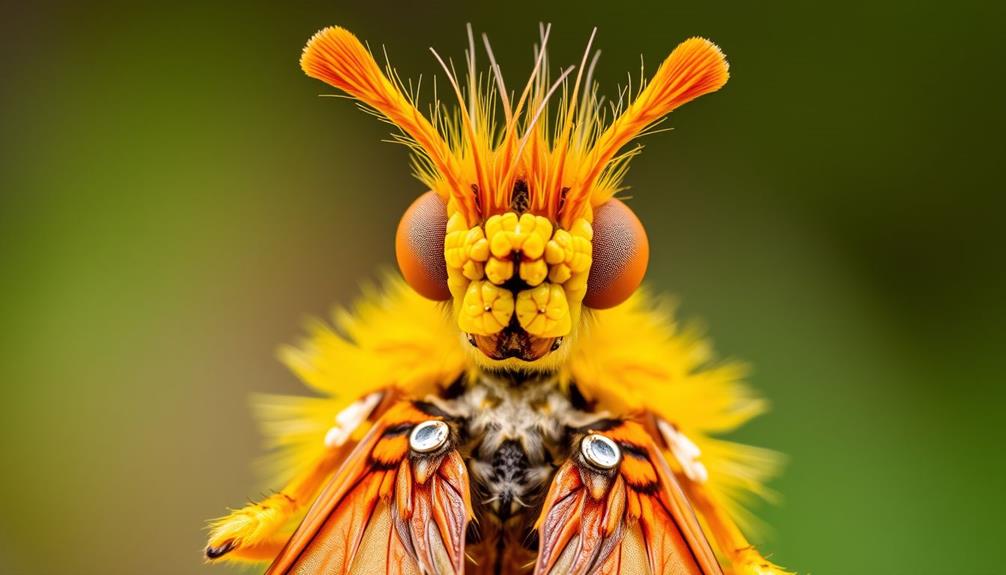
The Neopalpa donaldtrumpi moth stands out not just for its peculiar name but also for its striking physical features. Discovered in 2017, this small moth boasts a unique tuft of light-colored scales on its head, giving it an almost comical appearance. Its dark, mottled wing pattern further distinguishes it from other moth species, showcasing the incredible diversity within the Lepidoptera family.
Curiously, much like how cats exhibit unique behaviors and emotional responses, this moth's quirky charm adds to the wonders of the natural world. It reminds us of the emotional responses of animals hiding in our environment.
Measuring about the size of a postage stamp, Neopalpa donaldtrumpi is relatively small, yet it makes a big impression. Despite its unique features, little is known about its behavior and ecology, leaving a gap in research regarding its role within the ecosystem.
The excitement surrounding this moth illustrates how even the smallest creatures can capture our imagination and provoke curiosity about their lives. As we learn more about Neopalpa donaldtrumpi, we may uncover deeper insights into the world of moths and their importance in our environment.
World's Smallest Vertebrate Frog
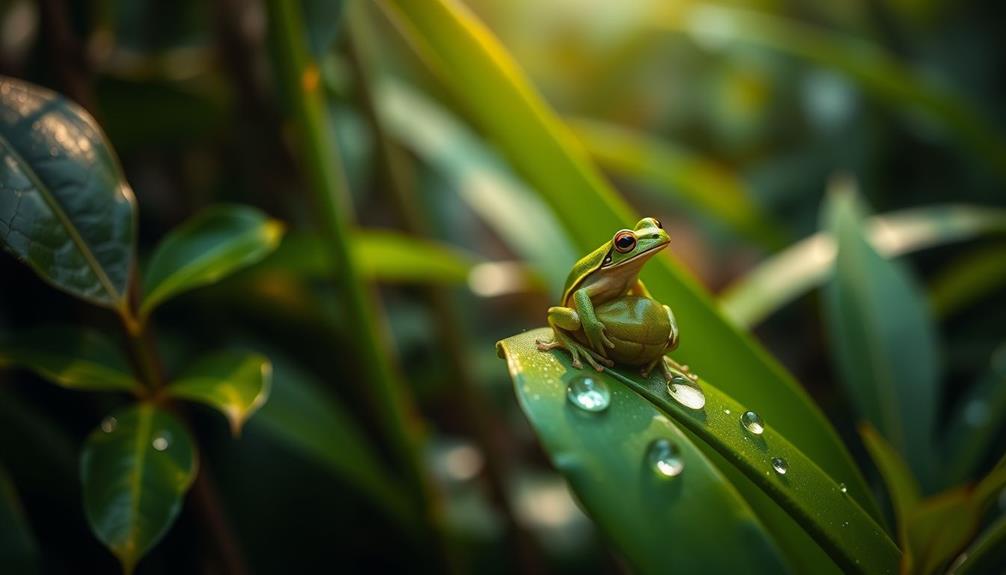
Meet Paedophryne amauensis, the world's smallest vertebrate frog, measuring just 7.7 mm long.
Found in the lush rainforests of Papua New Guinea, this tiny creature not only challenges size records but also highlights its unique habitat.
Curiously, the rainforests are similar to the environments found in top water parks for families, where diverse attractions cater to various age groups.
As you explore its environment, you'll see how its miniature size allows it to thrive among leaf litter while hunting for small invertebrates.
Record-Breaking Size Comparison
Imagine discovering a creature so tiny it could easily fit on the tip of your finger; that's exactly what the Paedophryne amauensis, the world's smallest vertebrate frog, offers. Measuring an average of just 7.7mm in length, this remarkable amphibian was first discovered on a small island in Papua New Guinea in 2009 and was officially classified in 2012. It surpassed a Southeast Asian fish to claim its title, highlighting an astonishing feat in nature.
The existence of such a minuscule creature prompts us to reflect on the significance of curiosity as a success tool, as it can lead to significant discoveries in the natural world. Its size challenges our perception of life. The frog's existence reminds us of the delicate balance of ecosystems. Discovering such a creature sparks curiosity about the unseen wonders of our world.
Classified as critically endangered, the Paedophryne amauensis thrives in leaf litter, camouflaging itself to escape predators. Its diminutive size showcases the incredible diversity found in Papua New Guinea's rainforests, where many species remain undiscovered.
The frog's discovery serves as a poignant reminder of the urgent need for biodiversity conservation. As these small and specialized species face increasing threats, our awareness and action become crucial to preserving their fragile habitats for future generations.
Habitat and Distribution Insights
Nestled within the lush rainforests of Papua New Guinea, the Paedophryne amauensis reveals a remarkable habitat that supports its survival. This tiny frog, averaging only 7.7mm in length, thrives in the moist, tropical environments of the Amau region. Its preferred habitat consists of leaf litter, which provides both shelter and breeding grounds essential for this species.
The intricate balance of ecosystems, such as those found in the rainforest, is critical for the survival of numerous organisms, including solar panel efficiency, which can impact local energy dynamics. Discovered in 2009 and officially classified in 2012, the Paedophryne amauensis showcases the ongoing exploration of biodiversity in remote areas. Its unique ecological niche highlights the importance of preserving these habitats, as they harbor countless undiscovered species.
The forest floor's leaf litter not only protects the frog but also plays a crucial role in its reproductive activities, ensuring the continuation of this remarkable species.
As part of Papua New Guinea's unique fauna, the Paedophryne amauensis serves as a reminder of the rich biodiversity that exists in the world. By understanding its habitat and distribution, you can appreciate the delicate balance of ecosystems where such extraordinary creatures reside. Protecting these environments is essential for the survival of species like this tiny vertebrate frog.
New Marine Discoveries in 2022
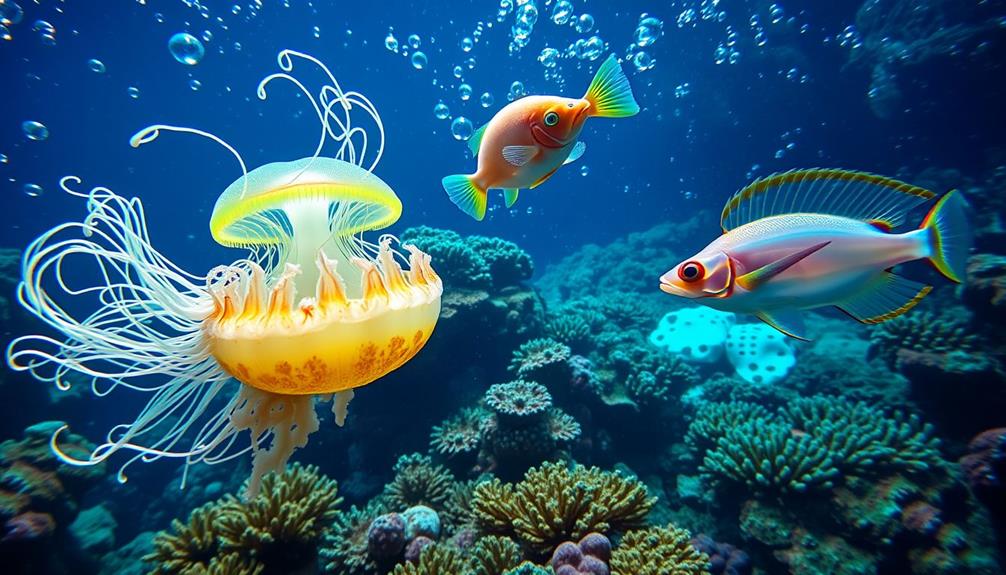
The excitement of discovery surged through the marine research community in 2022 as several remarkable new species were identified, each contributing to our understanding of oceanic biodiversity.
Among the standout findings, the *Cirrhilabrus finifenmaa*, or Rainbow Reef Fish, dazzled researchers with its vibrant colors in the twilight reefs off the Maldives. This new species is a demonstration of the beauty and complexity of marine ecosystems, much like the thrilling attractions found at water parks in Sarasota, which also celebrate the wonders of water.
In April, the *Atolla reynoldsi*, known as the Jelly Without a Telltale Tentacle, was uncovered, challenging our perceptions of deep-sea organisms.
Additionally, a unique bioluminescent shrimp was discovered in the Caribbean Sea, adding to the rich tapestry of light-emitting marine life. Five new species of colorful sea slugs were also recorded, showcasing the stunning variety of life beneath the waves.
- The vibrant hues of the Rainbow Reef Fish can inspire awe.
- The absence of tentacles in the Jelly Without a Telltale Tentacle raises intriguing questions.
- Discovering bioluminescent creatures reveals the mysteries of the deep.
These new species discovered in the last decade remind us that our oceans still hold countless secrets waiting to be uncovered.
Fascinating Terrestrial Species Found
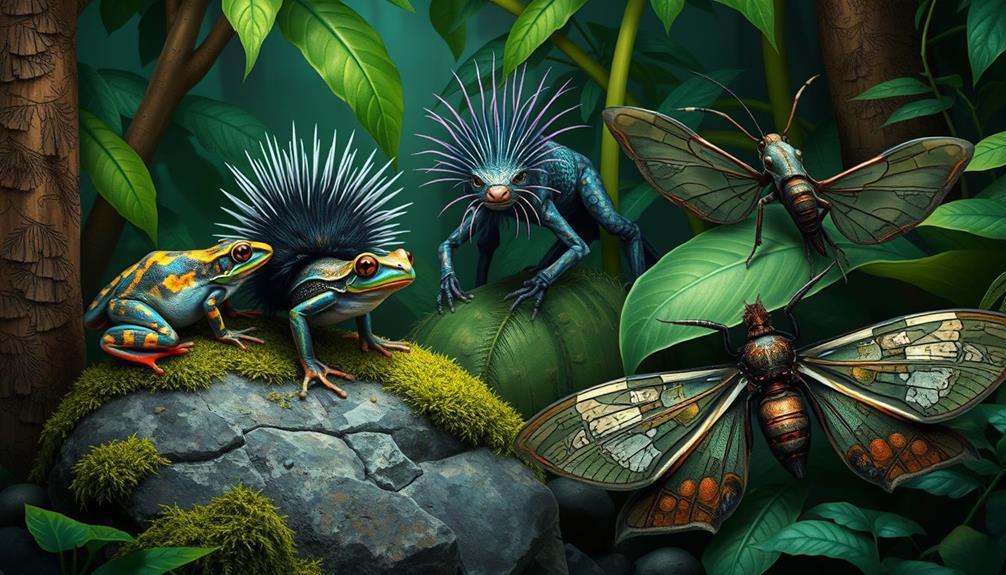
Let's explore some of the most unusual mammals and unique amphibians discovered in recent years.
From the tiny Goodmans Mouse Lemur to the venomous Greenings Frog, these species showcase nature's incredible diversity.
You'll be amazed at how these fascinating creatures adapt and survive in their specific environments.
Unusual Mammal Discoveries
While exploring the diverse world of mammals, you might be surprised to discover some of the most unusual species that have emerged in recent years. These unusual mammal discoveries not only captivate your imagination but also highlight the importance of biodiversity.
- The critically endangered Tapanuli Orangutan, with only about 800 individuals left, is the rarest great ape species in the world.
- The Goodmans Mouse Lemur, a tiny nocturnal primate from Madagascar, showcases the island's unique biodiversity.
- The Vangunu Giant Rat, found off the coast of the Solomon Islands, can grow up to 18 inches long and has a coconut-eating habit.
These fascinating creatures challenge how we perceive mammalian classification, as some species can be classified based on their distinct traits and habitats.
For instance, the critically endangered Pygmy Three-Toed Sloth, which thrives exclusively on Isla Escudo de Veraguas, relies on mangrove leaves for sustenance.
Each discovery tells a story of survival and adaptation, reminding us of the fragile ecosystems they inhabit and the urgent need for conservation efforts.
Unique Amphibian Species
Exploring unusual mammals opens the door to another fascinating domain—amphibians that defy expectations. Among the unique amphibian species classified in recent years, the Greening's Frog (Corythomantis greening) stands out. Discovered in 2015 in Brazil, it's the first known venomous frog, featuring spines that deliver a painful chemical cocktail, showcasing an unexpected defensive adaptation.
Another remarkable find is Paedophryne amauensis, identified in 2012 as the world's smallest vertebrate, measuring just 7.7mm. Native to Papua New Guinea, this tiny amphibian challenges our perceptions of size and biodiversity.
Next, the Siau Island Tarsier (Tarsius tumpara), discovered in 2013, highlights the significance of habitat conservation. Endemic to Siau Island in Indonesia, it boasts large eyes and an insectivorous diet, drawing attention to its fragile existence amid environmental threats.
These unique amphibian species reveal the astonishing diversity within this group and underscore the ongoing need for conservation efforts. As you investigate deeper into the world of amphibians, you'll discover not just their complexities but also the essential roles they play in our ecosystems.
Innovations in Insect Discoveries
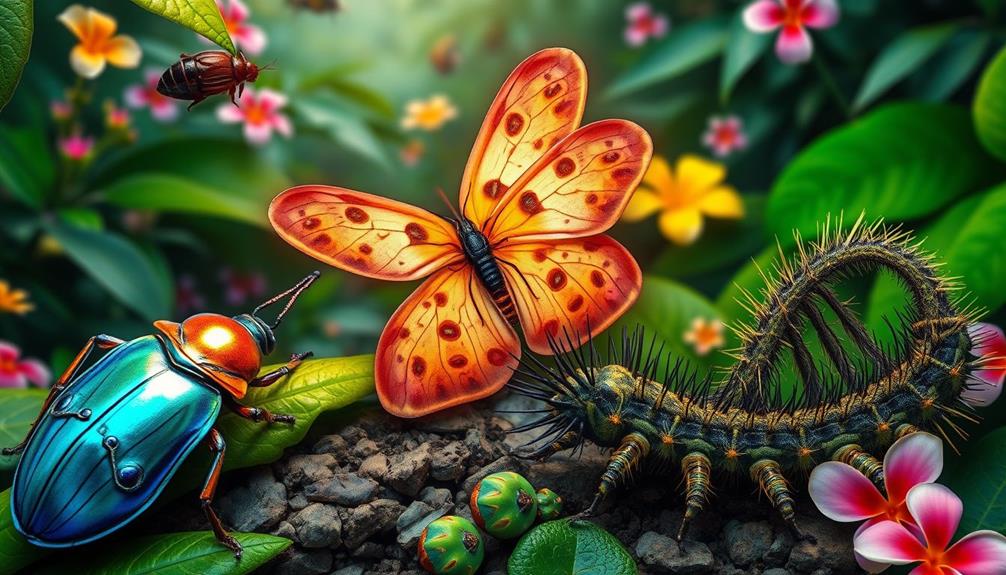
How have recent innovations in insect discoveries deepened our understanding of these remarkable creatures? Over the past decade, researchers have introduced extraordinary insect species that showcase unique adaptations, revealing the complexity of life in various environments.
These discoveries not only fascinate but also challenge our perceptions of what insects can do.
- Witnessing a rare beetle in Australia glow with bioluminescent properties fills you with awe.
- Observing a newly discovered ant's exceptional strength makes you appreciate the raw power hidden in the smallest of creatures.
- Learning about a unique wasp's cooperative behavior opens your eyes to the intricate social dynamics within insect populations.
In 2022, a new ant species demonstrated incredible strength, highlighting the remarkable adaptations insects develop.
In 2021, researchers identified a rare Australian beetle that glows, adding to the list of luminous organisms.
A unique wasp discovered in 2020 showcased complex social interactions, while a butterfly found in the Amazon revealed stunning wing patterns, enriching our understanding of biodiversity.
The Himalayan region even surprised scientists with an insect noted for its unique mating rituals, emphasizing diverse reproductive strategies in the insect world.
Unique Flora and Plant Species
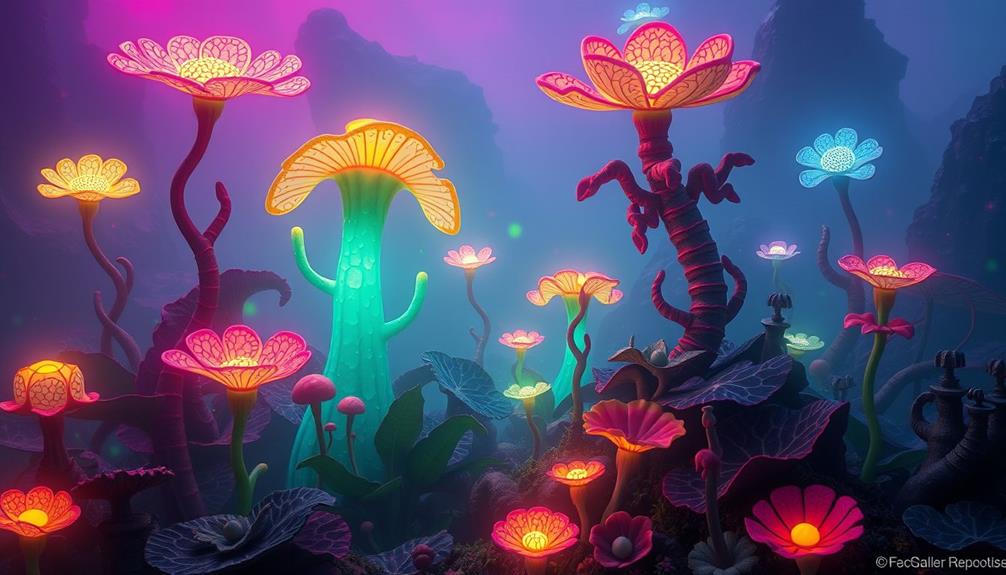
The wonders of nature extend beyond insects to the fascinating world of flora and plant species. In recent years, researchers have uncovered remarkable plants with unique adaptations that challenge our understanding of survival.
For instance, a new carnivorous plant species discovered in Florida's wetlands showcases innovative trapping and digestion methods, highlighting its ability to thrive in nutrient-poor environments.
In Madagascar, a rare flowering plant was identified that employs unusual pollination techniques, showcasing the region's exceptional biodiversity. This plant's intricate relationship with specific pollinators illustrates the delicate balance within its ecosystem.
Additionally, a striking new orchid species found in Southeast Asia captivates with its vibrant colors and complex floral structure, attracting both pollinators and plant enthusiasts alike.
Moreover, in the Amazon, scientists documented a unique tree species exhibiting rapid growth rates, which plays a vital role in carbon sequestration efforts.
Finally, a newly identified succulent species in arid South Africa demonstrates remarkable drought resistance, essential for maintaining local ecosystems.
These discoveries remind us of nature's incredible diversity and the importance of understanding these unique flora and plant species.
Conservation Challenges and Implications
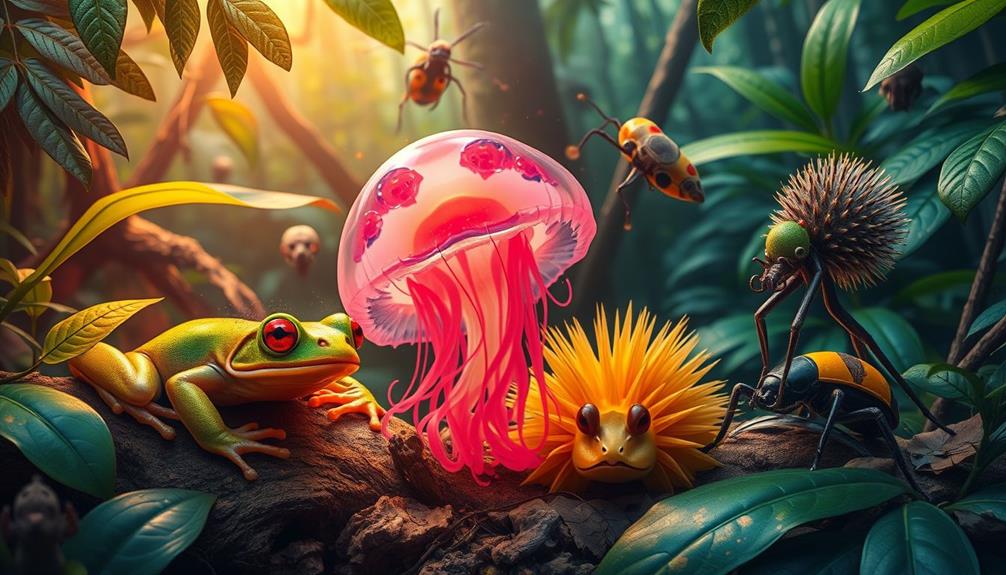
As new species continue to emerge, it becomes increasingly clear that conservation challenges are more pressing than ever. The recent discovery of the critically endangered Tapanuli orangutan, with a mere 800 individuals left, highlights the urgent need for targeted conservation efforts.
Species like the Goodmans mouse lemur and the pygmy three-toed sloth showcase Madagascar's biodiversity under vital status due to habitat loss and environmental degradation.
You should consider the emotional weight of these challenges:
- The Odd Owl, teetering on the brink with only 1,000 to 1,500 individuals left.
- The unique Greenings frog, the world's first venomous frog, facing an uncertain future.
- The potential extinction of the Tapanuli orangutan, a symbol of our planet's dwindling diversity.
These discoveries emphasize the need for proactive conservation strategies, especially in the face of climate change.
Without immediate action, we risk losing not just these extraordinary species but also the ecological roles they play. Effective conservation assessments and recovery plans are essential in protecting their habitats and ensuring that future generations can marvel at these strange and wonderful creatures.
Conclusion
From the quirky Olinguito to the eerie Bone-house Wasp, the last decade has revealed a breathtaking array of bizarre creatures, each more fascinating than the last. Yet, as we marvel at these wonders, we must confront the stark reality of their fragility in a changing world. The same innovations that expose these unique species also highlight the urgent conservation challenges they face. Embracing both awe and responsibility, we can work to protect these extraordinary beings for generations to come.







